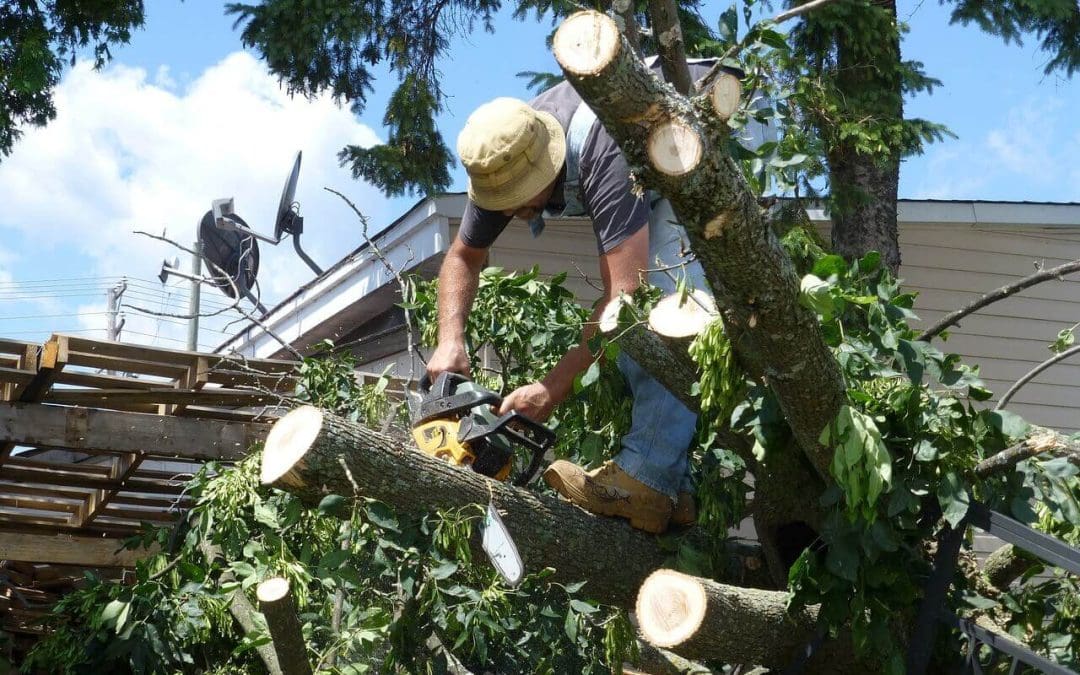Trees are valuable features, providing shade, beauty, and environmental benefits. However, there are times when removing a tree from your yard becomes necessary for safety or liability reasons. Deciding when to remove a tree from your property requires carefully considering various factors. In this article, we’ll explore when it’s appropriate to remove a tree and the steps involved in making this decision.
Assessment of Tree Health Will Help You Decide to Remove a Tree
The first step in determining whether a tree should be removed is to assess its health. Signs of poor health include:
- Dead branches or limbs
- Extensive leaf loss or discoloration outside of regular seasonal changes
- Fungus or mushrooms growing at the base of the tree
- Cracks or splits in the trunk
- Leaning or significant trunk damage
Safety Concerns
Safety is paramount when it comes to tree removal. Trees that pose a threat to people or property due to their condition, location, or structural integrity should be removed promptly. Consider removing a tree if it:
-
- Leans precariously towards structures, utility lines, or pedestrian areas.
- Shows signs of root damage that may destabilize its foundation.
- Has large dead branches that could fall and cause injury or damage during storms or high winds.
Encroachment and Space Constraints
Trees may outgrow their space or interfere with structures, utilities, or other landscaping features. If a tree’s growth impedes structures, hardscaping, or power lines, removal may be necessary to maintain the integrity and functionality of the property.
Disease or Pest Infestation May Require You to Remove a Tree
Trees afflicted with diseases or infested by pests may become a liability and could spread the problem to nearby trees. In cases where the disease or infestation cannot be effectively treated or controlled, removal may be the best course of action to prevent further spread and protect the landscape’s overall health.
Declining Aesthetic Value
While aesthetics alone may not justify tree removal, the overall appearance of a tree can influence the decision-making process. Trees that have become unsightly due to extensive damage, disease, or poor growth habits may detract from the property’s visual appeal and may warrant removal, especially if attempts to rehabilitate or prune the tree have been unsuccessful.
Environmental Considerations and When to Remove a Tree
Before removing a tree, consider its ecological value and the potential impact its removal may have on local wildlife, soil stability, and air quality. In some cases, alternative solutions such as tree preservation, transplanting, or replanting native species may be more suitable than outright removal.
Professional Consultation
When in doubt, seek advice from certified arborists or tree care professionals. They can assess the tree’s condition, provide recommendations, and offer guidance on whether removal is necessary. Additionally, local regulations or ordinances may govern tree removal, especially for protected or heritage trees, so it’s essential to familiarize yourself with any applicable laws or permits required in your area.
Removing a tree from your property is not a decision to be taken lightly. It requires careful evaluation of the tree’s health, safety considerations, space constraints, and environmental impact. By considering these factors and seeking expert advice when needed, you can make informed decisions that ensure the safety, health, and aesthetics of your property for years to come.
Tree Removal FAQ
Could removing a tree impact the value of my property?
Removing certain trees, especially those that pose safety hazards or obstruct views, can increase property value by improving aesthetics and safety.
What legal considerations should I keep in mind regarding tree removal on my property?
Property owners are generally responsible for the maintenance and safety of trees on their land. Follow local regulations, obtain necessary permits, and hire licensed professionals to minimize legal risks associated with tree removal.
Is it advisable to attempt tree removal myself, or should I hire a professional service?
While some property owners may have the skills and tools to safely remove small trees, it’s generally recommended to hire professional arborists for larger or more complex jobs to avoid accidents and property damage.
Is it possible to replant a tree in the same location after removal?
Yes, you can replant a new tree in the same spot if desired. Choose a suitable species and consider factors like soil quality, space availability, and potential hazards to ensure the new tree thrives.
Monadnock Home Inspections offers inspections to homebuyers and sellers in southern New Hampshire. Contact us to request our services.

